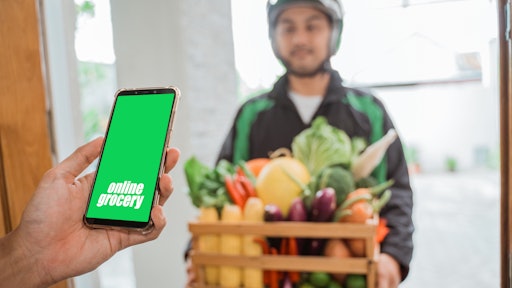
The overall U.S. online grocery market ended March with total monthly sales of $8 billion, holding steady compared to a year ago, according to the most recent Brick Meets Click/Mercatus Grocery Shopper Survey. These monthly results are an improvement over March 2023, when total monthly e-grocery sales fell 8% on a year-over-year basis. Current sales are 23% above the levels posted in March 2020, the initial month of the pandemic in the United States.
“While most people recognized that the pandemic was a catalyst for buying groceries online, few could fully anticipate the implications of that surge,” says David Bishop, partner at Brick Meets Click. “Now, four years after COVID-19 first impacted our everyday lives, e-grocery in the U.S. looks very different from both a contribution and growth perspective, and this will impact how grocers and others expand and drive profitability in their respective businesses moving forward.”
Key takeaways:
- Pickup and delivery share has grown at the expense of ship-to-home. Pickup, which accounted for less than one-third of e-grocery sales in 2019, quickly moved to the top spot when the pandemic started and has stayed there ever since, expanding 586 basis point (bps) from March 2020 to 43.2% this year.
- Delivery, which represented one-quarter of all online sales in 2019, experienced an even larger jump in market share, expanding by 1,488 bps during the same period to end March 2024 with 39.1%.
- The past four years of sales results shows that total e-grocery sales for March peaked in 2021 and have declined or been flat on a year-over-year basis since then. Ship-to-home crested in March 2020, pickup crested in 2021, and delivery did so in 2022. Recently, ship-to-home posted a gain of 5.9% in sales in March vs. last year while pickup’s sales were unchanged, and delivery’s monthly sales dipped 2.6%.
- In March, the total e-grocery customer pool (which consists of active and lapsed or infrequent users), expanded to include 78.6% of all U.S. households, up just 13 bps vs. the prior year, and slightly less than the 16 bps it grew in March 2023 vs. 2022. In contrast, at the end of the first month of the pandemic in 2020, online grocery household penetration finished at 70.8%. And, while the overall e-grocery Monthly Active User (MAU) base as a share of total households more than doubled at the start of COVID, finishing March 2020 at 57.5%, the share of MAUs since then has generally remained in the 50% range.
- Most U.S. households continue to have strong preferences for how they receive their online grocery orders. The share of MAUs that used only one method during the past 30 days has climbed 340 bps to 71.7% from March 2020 to 2024.
- Competition online for the active customer has also gotten more intense for supermarkets. For March, that cross-shopping rate stands at nearly 27% as reduced purchasing power.


























